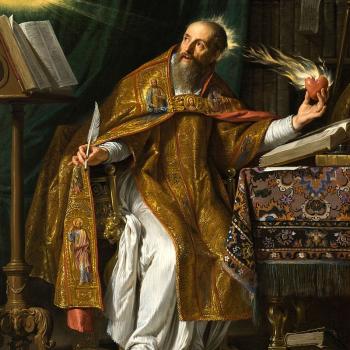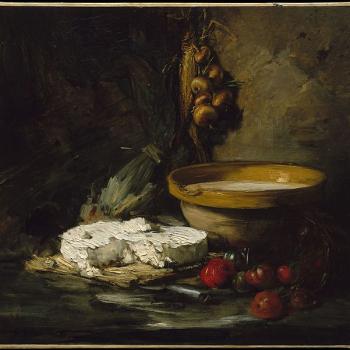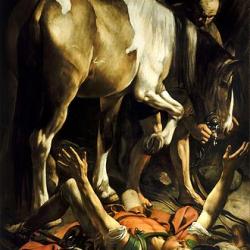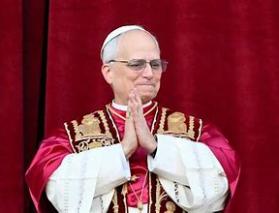The theme of mission and witness is a consistent theme said by Catholics of all types that pops up often in the recent selections.
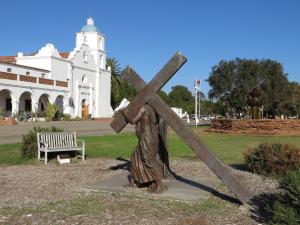
Sebastian Gomes– If we want to evangelize, we can’t be hypocrites | America Magazine
As spectacle, The Rings of Power is so far an unqualified triumph, from the capable direction of J.A. Bayona (Jurassic World: Fallen Kingdom) to the rich production design, spectacular landscapes, and persuasive special effects. Every setting in Middle-earth has a distinct feel, from the elegant birch colonnades of the Elvish capital of Lindon to the rugged, geometric grandeur of Khazad-dûm
Payne and McKay say that the show’s planned five-year arc has been set since they first pitched it to Amazon in 2018. Early fears about The Rings of Power taking a raw Game of Thrones approach—or recapitulating the gilding-the-dragon excesses of Peter Jackson’s misbegotten Hobbit trilogy—aren’t borne out in the opening chapters, at least. Where will the series go from here? Will it build to the War of the Last Alliance? Will it end with Isildur’s failure at Mount Doom, his death, and the disappearance of the One Ring? Or will the showrunners find a way to end in Tolkienesque eucatastrophe—a “sample or glimpse of final victory”? The Rings of Power has my attention, at least for now.
Deacon Steve-A new foray into Middle-Earth: The Rings of Power – Catholic World Report
News accounts had claimed Gorbachev had referred to St. Francis as an “alter Christus,” Latin for “another Christ.” The former Soviet leader had allegedly said he was fascinated by the life of St. Francis and claimed that the medieval saint’s story “has played a fundamental role in my life.”
A spokesman for then-Russian Orthodox Patriarch Alexy II had responded to the reports, saying, “He is still on his way to Christianity. If he arrives, we will welcome him.”
On Wednesday Pope Francis wrote to Gorbachev’s daughter Irina Gorbachev, extending his “heartfelt condolences.” He voiced his “spiritual closeness” to those grieving.
“As we gratefully remember his far-sighted commitment to concord and fraternity amongst peoples, as well as to the progress of his own country at a time of important changes, I raise prayers of suffrage, invoking eternal peace for his soul from the good and merciful God,” the pope said.
Kevin J. Jones, Mikhail Gorbachev’s death revives unfounded rumors of Christian conversion | Catholic News Agency
The loss to the world from the Queen’s passing is incalculable. Even if one does not support the institution of monarchy, we all should realize that figures like Queen Elizabeth are good for the world. She was an example of selfless service for a greater good, of putting duty above personal desires, and of a quiet dignity in the midst of turmoil. These are characteristics that should be exalted in a healthy culture, but are sadly dismissed in our diseased world.
Today we celebrate the Nativity of the Blessed Mother while we mourn the loss of Queen Elizabeth II. This is fitting, for in so many ways this earthly Queen was a motherly figure to the world, setting an example for all to follow. Let us now pray that the Blessed Mother might intercede for the Queen and bring her to the Heavenly Kingdom.
Eric Sammons-The Witness of Queen Elizabeth II (crisismagazine.com)

Over the past century, the number of Catholics around the globe has increased dramatically. From an estimated 291 million in 1910 to over one billion as of 2010, according to the Pew Research Center. Interestingly, over the same period the world’s overall population also has risen rapidly. As a result, Catholics have made up a remarkably stable share of all people on earth. In 1910, Catholics comprised about half of all Christians and 17 percent of the world’s total population. A century later, Catholics still comprise about half of Christians worldwide and 16 percent of the total global population. However, the geographic distribution of the world’s Catholics has vastly changed. In 1910, Europe was home to about two-thirds of all Catholics, and nearly nine-in-ten lived either in Europe or Latin America. By contrast, in 2010, less than a quarter of all Catholics were in Europe, with only 39 percent residing in Latin America.
Rapid growth has occurred in sub-Saharan Africa, which today is home to about 171 million Catholics, up from an estimated one million in 1910. There also has been an increase of Catholics in the Asia-Pacific region, where 131 million Catholics now live, up from fourteen million a century ago. In North America the Catholic population has increased from about fifteen million in 1910 to eight-nine million as of 2010.
Cary Dabney, Race in the Catholic Imagination | Church Life Journal | University of Notre Dame (nd.edu)

Mother Teresa is one of my heroes. Her profound love for Jesus in the poor has inspired me for years. I’d dreamed of “Calcutta” as this larger-than-life place that instantly transforms people into saints. I was expecting to be filled with exalted angelic feelings as I worked in Nirmal Hriday, a home for the destitute and dying. Like somehow walking in Mother Teresa’s footsteps would imbue every action with deep significance.
Very quickly the rose-tinted glasses began to crack. My feelings were everything but holy and loving. I was tired. I was hot. I was completely overwhelmed by the crowded, noisy, polluted city. At Nirmal Hriday it was a struggle to keep my mind on the task at hand. I felt frustrated and inept. Yes, it was Christ who we served in these women, but I still gave an inward shudder at changing adult diapers, cleaning wounds, and wiping drool. I felt like I was doing “small things,” but without “great love.”
Rebekah L., More than a Feeling: One Missionaries’ Honest Reflection in Calcutta – IGNITUM TODAY
I have in mind the recent interview of Bishop Robert Barron with actor Shia LaBeouf. This young man, who wound up in serious personal quicksand, estranged from parents, marginalized by agents and directors, a sort of leper in his field, found his way to the Catholic Faith. At first, he was interested in a prospective acting job that could get him working again, a movie about St. “Padre” Pio. It was useful for him to draw close to Catholic things. Eventually he finds self-described healing in Mass in the Vetus Ordo, which was the only form of Mass St. Pio ever celebrated. In his encounters with Mass and men of faith, and the Catholic “thing,” he is Catholic. He is present to it in its beauty, in its healing touch.
Fr. John Zuhlsdorf –13th Sunday after Pentecost: “Unclean! Unclean” – OnePeterFive
God is Love, and Love was crucified, which of itself was a hateful act directed toward Love. It is by this simple categorical reasoning that we can assert: we hated Love. This is perhaps a jarring statement, but it needs to sink-in. We use the term love often, but since we are fallen, we have to admit honestly to ourselves that our will sometimes would prefer something other than love. The foolery is when we put the label “love” on something that isn’t actually loving.
Fr. Chris Pietraszko, “There is Nothing as Hateful as Christian Love” (missiodeicatholic.org)
David Mills, Don’t Mix Apples and Oranges in the Argument From Fruits| National Catholic Register (ncregister.com)
Prayer and penance are different on pilgrimage. It’s in different languages. It’s in song. It’s in our bodies. (Some of us climbed the hills barefoot as a sign of penance.) We carried people with us in prayer. Our group was especially thankful to the residents of the Cenacolo Community who carried one of our pilgrims with limited mobility up Apparition Hill in a litter. We all brought prayer intentions with us and entrusted them to Our Lady and to her Son with total trust.
Our Catholic faith is rich. It’s universal. It’s alive and active! The young families in Medjugorje gave witness to this. The elderly pilgrim climbing a mountain barefoot gave witness to this. The hundreds of priests at the closing Mass of the youth festival gave witness to this. We’re all on a journey with a holy destination — to be united with Jesus in his heavenly kingdom. We have a foretaste of this at every Mass. Maybe the next time you go to Mass, you might consider yourself as going on pilgrimage. It’s an ideal way of bringing that pilgrim experience closer to home. Kathryn Press Pilgrimages, people and prayer | Global Sisters Report National Catholic Reporter
In a strange way, the focus on Pope John Paul I’s death has, in a sense, overshadowed his life, including his character and virtue. This has made the fullness of his story and witness at times difficult to promote, grasp and appreciate. But it appears the Holy Spirit has been working, as evidenced in the cult of devotion to him that paved the way for his beatification, and a legacy of holiness has also endured the decades.
In his own words: “I said: ‘I shall be called John Paul.’ I have neither the ‘wisdom of the heart’ of Pope John, nor the preparation and culture of Pope Paul, but I am in their place. I must seek to serve the Church. I hope that you will help me with your prayers.”
Another aspect of John Paul I’s legacy is a collection of letters written by Luciani to various religious and historical figures, as well as fictional characters — from King David and Jesus Christ, to Pinocchio and Figaro the Barber, to Mark Twain and Charles Dickens. “Illustrissimi,” or “The Illustrious Ones,” was first published as a book in Italian in 1976 and published in English after his election to the papacy. Although it was not in print until after his death, it also provides a glimpse into Luciani’s character, faith and insight, not to mention his whimsy and imagination — all found in the following select quotations.
To Charles Dickens: “I enjoyed your [Christmas books] immensely because they are filled with love for the poor and a sense of social regeneration; they are warm with imagination and humanity…”
To St. Thérèse of Lisieux: “Thérèse, the love you bore God (and your neighbor, out of love for God) was truly worthy of Him. So our love must be: a flame that is fed on everything great and beautiful in us, that renounces everything rebellious in us; a victory that takes us on its own wings and carries us, as a gift, to the feet of God.”
To Pinocchio: “My dear Pinocchio, there are two famous remarks about the young. I commend the first, by Lacordaire, to your attention: “Have an opinion and assert it!” The second is by Clemenceau, and I do not commend it to you at all: “He has ideas, but he defends them with ardor!”
Michael R. Heinlein The lasting legacy of Blessed John Paul I, the Smiling Pope – Our Sunday Visitor (osvnews.com)
Father Min Seo Park was the first deaf priest ordained in Korea and one of only a handful of deaf Catholic priests globally. He is a diocesan priest for the Archdiocese of Seoul, South Korea and is currently on missionary assignment to St. Francis of Assisi Deaf Catholic Church in Washington, D.C. ‘
He credits his early love of movies and musicals with influencing how he signs and celebrates Mass. “When I was a Deaf child, there was closed captioning and sign language interpretation on TV,” he says. “When I watched TV movies and drama, I did not understand what they said. However, I carefully looked at their facial expression and body language, and I somewhat understood what they meant. Their facial expression and body movement helped make me who I am now.”
“It is good for me that I remain in Jesus Christ and He remains in me. I remain in Deaf people and Deaf people remain in me. I believe that my Deafness is God’s amazing grace,” Park says. There go those dancing eyebrows again. “God is mysterious.”
PAMELA HILL NETTLETON How a deaf priest is reaching a neglected Catholic community – U.S. Catholic (uscatholic.org)
Enthusiasm can be a dangerous thing. At times, it might seem like we could get along better without it! Enthusiastic movements have a long and checkered history in the Church. In his book Enthusiasm, Ronald Knox chronicles the many enthusiastic movements that have led to schisms in the Church, from the Montanists to the Cathars to the Jansenists. In every case, enthusiastic Christians have rejected an establishment seen as staid, compromising, and worldly, only to end up building their own parallel structures and institutions. And yet, Knox concludes by reminding the reader that we can’t do without enthusiasm. After all, the saints were extremely enthusiastic, and without saints, there would soon be no Church.
The danger in enthusiastic movements truly lies in the “movement” aspect rather than in the “enthusiastic” aspect. The tragedy of such movements is that they misdirect and squander the enthusiasm that could have served to renew the Church. Instead of renewal, they lead to fragmentation and decay.
Malcolm Schluenderfritz, The Danger and Necessity of Enthusiasm – Where Peter Is
Some people think a Catholic intellectual is something like a waterproof towel, a screen door on a submarine, or an ejection seat on a helicopter, as Jonathan Swan quipped. These people must have forgotten about the long list of Catholic intellectuals, from Augustine and Aquinas in the premodern world, Leonardo da Vinci and Thomas More in the Renaissance, and Elizabeth Anscombe and Alasdair MacIntyre in our own times.
It is always surprising to me that nonbelievers sometimes posit that the life of faith shuts down the inquiring mind. In fact, faith does not dampen the desire to know, but inflames it. Thomas Aquinas pointed out that “the knowledge of faith does not set the desire at rest, but inflames it because everyone desires to see what he believes.” Catherine of Siena put the point even more emphatically:
“You [God] are a mystery as deep as the sea; the more I search, the more I find, and the more I find, the more I search for you. But I can never be satisfied; what I receive will ever leave me desiring more. When you fill my soul I have an even greater hunger, and I grow more famished for your light. I desire above all to see you, the true light, as you really are.
Dr. Christopher Kaczor A Catholic Intellectual: A Contradiction in Terms? – Word on Fire




